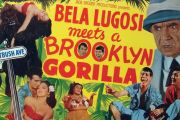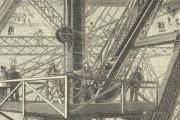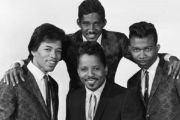Just Add Milk: How Cereal Transformed American Culture
 More than a century ago, Christian fundamentalists invented cereal to promote a healthy lifestyle free of sin. Little did they know, their creation would eventually be used to promote everything from radio and cartoons to Mr. T and tooth decay.
More than a century ago, Christian fundamentalists invented cereal to promote a healthy lifestyle free of sin. Little did they know, their creation would eventually be used to promote everything from radio and cartoons to Mr. T and tooth decay.
Meat Is Murder (on the Colon)
During the early 19th century, most Americans subsisted on a diet of pork, whiskey, and coffee. It was hell on the bowels, and to many Christian fundamentalists, hell on the soul, too. They believed that constipation was God's punishment for eating meat. The diet was also blamed for fueling lust and laziness. To rid America of these vices, religious zealots spearheaded the country's first vegetarian movement. In 1863, one member of this group, Dr. James Jackson, invented Granula, America's first ready-to-eat, grain-based breakfast product. Better known as cereal, Jackson's rock-hard breakfast bricks offered consumers a sin-free meat alternative that aimed to clear both conscience and bowels.
While Jackson's innovation didn't appeal to the masses, it did catch the attention of Dr. John Kellogg. A renowned surgeon and health guru, Kellogg had famously transformed the Battle Creek Sanitarium in Michigan into one of America's hottest retreats. Socialites from the Rockefellers to the Roosevelts flocked to "The San" to receive Kellogg's unorthodox treatments. But shock-therapy sessions and machine-powered enemas weren't the only items on the agenda. Kellogg also stressed such newfangled ideas as exercise and proper nutrition. It wasn't long before he started serving bran biscuits similar to those of Dr. Jackson—only now with the Kellogg name on them. To avoid a lawsuit, he changed the name of the cereal by one letter, dubbing it "Granola."
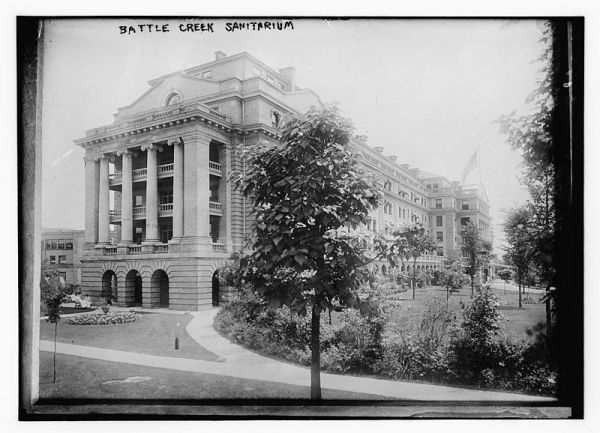
By 1889, The San was selling 2 tons of granola a week, despite the fact that it was barely edible. The success inspired Dr. Kellogg and his brother, W.K., to produce more-palatable fare. After six years of experimentation, a kitchen mishap by W.K. yielded the breakfast staple known as cereal flakes.
Making Red Blood Redder
 In many ways, the cereal flake is the perfect consumer product. It's easy to produce, easy to sell, and surprisingly lucrative. To this day, cereal comes with an eye-popping profit margin of 50 percent. These merits became clear to Charles Post, a failed suspender salesman who moved to Battle Creek in 1895. Post began selling knock-off versions of Kellogg's products with a twist of his own—advertising. At the time, advertising was associated with snake-oil salesmen and con artists. But Post, who had a background in sales, didn't mind drizzling a little snake oil on his product. He published pamphlets with titles such as "The Road To Wellville" and claimed his cereal, Grape-Nuts, could cure appendicitis, improve one's IQ, and even "make red blood redder." By 1903, he was clearing $1 million a year.
In many ways, the cereal flake is the perfect consumer product. It's easy to produce, easy to sell, and surprisingly lucrative. To this day, cereal comes with an eye-popping profit margin of 50 percent. These merits became clear to Charles Post, a failed suspender salesman who moved to Battle Creek in 1895. Post began selling knock-off versions of Kellogg's products with a twist of his own—advertising. At the time, advertising was associated with snake-oil salesmen and con artists. But Post, who had a background in sales, didn't mind drizzling a little snake oil on his product. He published pamphlets with titles such as "The Road To Wellville" and claimed his cereal, Grape-Nuts, could cure appendicitis, improve one's IQ, and even "make red blood redder." By 1903, he was clearing $1 million a year.
Across town, Dr. Kellogg refused to sully The San's reputation with heathen advertising, and his profits suffered as a result. W.K., however, had no such qualms and set out to emulate Post. In his first national campaign, he told women to "Wink at your grocer, and see what you get." (Answer: a free box of Kellogg's Corn Flakes.) Within a year, he'd sold 1 million cases of cereal. With the leading cereal makers embracing such unabashed hucksterism, it was clear that cereal's connection to its fundamentalist roots had come to an end.
Thinking Outside the Box
All across America, the eyes of investors lit up with dollar signs, and would-be cereal barons descended on Battle Creek like locusts. By 1911, 107 brands of corn flakes were being made in Battle Creek alone.
But the cereal business had one major drawback—there was little substantive difference between brands. To stand out from the crowd, manufacturers realized that they had to focus more on the outside of the box than on what was inside. Some tried decorating their products with adjectives, creating names like University Brand Daintily Crisped Flaked Corn. Others competed to appear the healthiest. Tryabita, for example, was infused with celery flavor because, well, it sounded healthy.
But the real winner was a cereal called Force. Its mascot, Sunny Jim, was a strutting, top-hatted gentleman who became so popular in newspapers and magazines that other cereal makers rushed to create their own mascots. For a cereal called Elijah's Manna, Charles Post even tried putting a picture of the prophet on the label. Although the product was eventually pulled, one industry ground rule had been established: Every box needs a character.
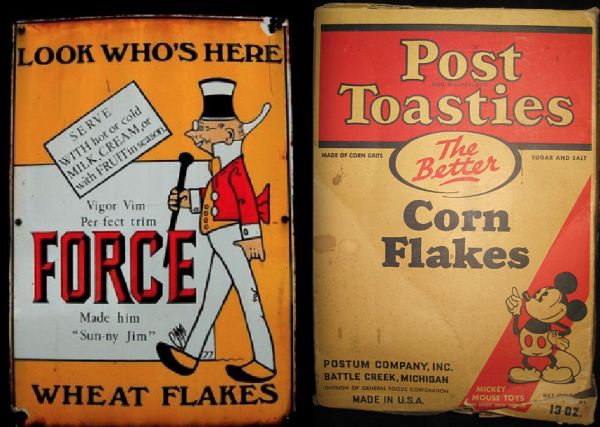
Before long, cereal makers had an insatiable appetite for finding the right mascot, regardless of the cost. During the Depression, Post Toasties decided to use cartoon animals on its boxes and paid its cartoonist $1.5 million in the first year. That artist was Walt Disney, and he used the earnings to build the Disney empire.
The Children Are the Future
Cereal's total reliance on advertising meant that it was essential for companies to keep up with new forms of media. Quaker Oats, for example, hitched its sales to the rise of radio in the 1920s by giving away more than 1 million radios as part of a promotion. Cereal companies were also quick to buy up radio stations and produce radio shows. For the most part, they churned out dramas and gossip shows aimed at housewives. But a radical shift in demographics came in 1936, thanks to a boy named Skippy.
A Dennis the Menace type who frequently interrupted his adventures to extol the virtues of Wheaties, Skippy was the first cereal character directly marketed to children. As it turned out, kids ate him up, and cereal producers learned an important lesson: Children are suckers. The flood of kid-friendly, cereal-shilling characters that followed reads like a Who's Who of American iconography, including the Lone Ranger, Dick Tracy, and Buck Rogers. By the 1960s, cereal advertisers were devoting 90 percent of their budgets to reaching children.
 In the process of targeting the young, cereal companies also realized that kids don't care about their colons. They want sugar. Lots of sugar. In 1939, a Philadelphia heater salesman named Jim Rex created the first sugared cereal, called Ranger Joe Popped Wheat Honnies. Ironically, he designed the cereal to minimize the amount of sugar children consumed. He reasoned that if he lightly presweetened his product, kids wouldn't add more sugar on top. He was wrong, and his good intentions were lost on bigger companies. After Ranger Joe sales skyrocketed, manufacturers started producing cereals such as Sugar Smacks, which contained a shocking 56 percent sugar.
In the process of targeting the young, cereal companies also realized that kids don't care about their colons. They want sugar. Lots of sugar. In 1939, a Philadelphia heater salesman named Jim Rex created the first sugared cereal, called Ranger Joe Popped Wheat Honnies. Ironically, he designed the cereal to minimize the amount of sugar children consumed. He reasoned that if he lightly presweetened his product, kids wouldn't add more sugar on top. He was wrong, and his good intentions were lost on bigger companies. After Ranger Joe sales skyrocketed, manufacturers started producing cereals such as Sugar Smacks, which contained a shocking 56 percent sugar.
How did cereal companies reconcile this with their original commitment to the health movement? Taking a page out of Post's playbook, they declared that sugar wasn't bad for you because it gave you the fuel you needed to start your day. With trusted radio personalities extolling the "energy-giving" virtues of cereal, impressionable kids and their frazzled parents rushed to stores.
TV Nation
Television took advertising for sugar cereals to a new level, and the master of the new medium was an ad man named Leo Burnett. He invented TV programs specifically designed to entertain children and sell Kellogg's products. Much like Skippy a decade before, Burnett's characters would turn to the screen in the middle of a show and pitch the merits of a particular brand. There was nothing subtle about it. Howdy Doody, Roy Rogers, Andy Griffith, Rin Tin Tin, the Beverly Hillbillies, Yogi Bear, and Fred Flintstone all became television icons because they were good at selling cereal.
Also at Burnett's urging, cereal companies invested heavily in early television technology. (They still do; cereal is the second-largest advertiser on television today, behind automobiles.) The financial backing let them shape the medium to suit their needs—namely, adding color. Burnett was one of the earliest believers in motivational psychology and understood that colors appealed to kids and moms subliminally. When color TV became a reality, he persuaded Kellogg to use anthropomorphized cartoon animals as mascots. He thought animation would make for better, more colorful commercials. The first mascot they produced was Tony the Tiger, whose meteoric success was followed by hundreds of other cartoon icons.
Burnett's advertising style was so effective that cereal sales continued to rise every year, unlike most products at the grocery store. After a while, parents and child psychologists became concerned that the ads were a little too effective. In the late 1960s, consumer advocates claimed that using cartoon characters to target children was overly manipulative, if not unethical. Eventually, in 1990, they forced Congress to pass a law banning TV characters from pitching directly to children in the middle of a show. Protective measures aside, cereal had strayed far from its wholesome origins. While Dr. Jackson's dream of displacing pork chops from the breakfast table had become a reality, his cereal wasn't what it used to be. Bitten by the fangs of consumerism, Granula had transformed into Count Chocula in the course of a century.
__________________________
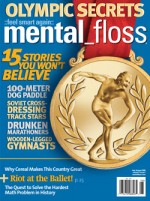 The above article is by Ian Lender, the author of Alcoholica Esoterica: A Collection of Useful and Useless Information As It Relates to the History and Consumption of All Manner of Booze, and is reprinted with permission from the July-August 2008 issue of mental_floss magazine.
The above article is by Ian Lender, the author of Alcoholica Esoterica: A Collection of Useful and Useless Information As It Relates to the History and Consumption of All Manner of Booze, and is reprinted with permission from the July-August 2008 issue of mental_floss magazine.
Be sure to visit mental_floss' entertaining website and blog for more fun stuff! ![]()
We hope you like this article!
Please help us grow by sharing:
Get Updates In Your Inbox
Free weekly emails, plus get access
to subscriber-only prizes.








